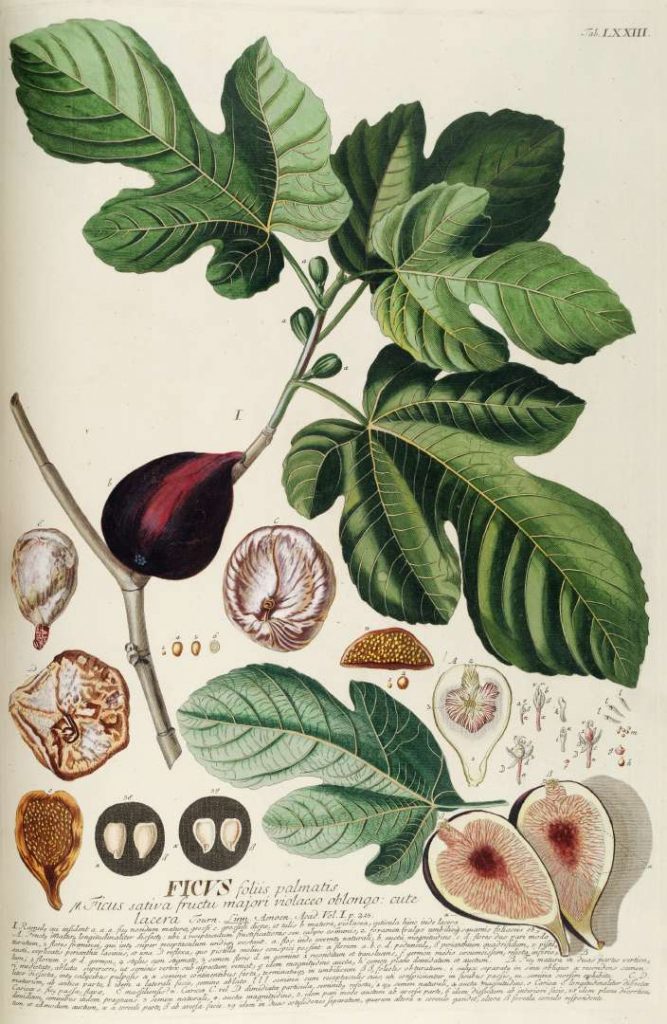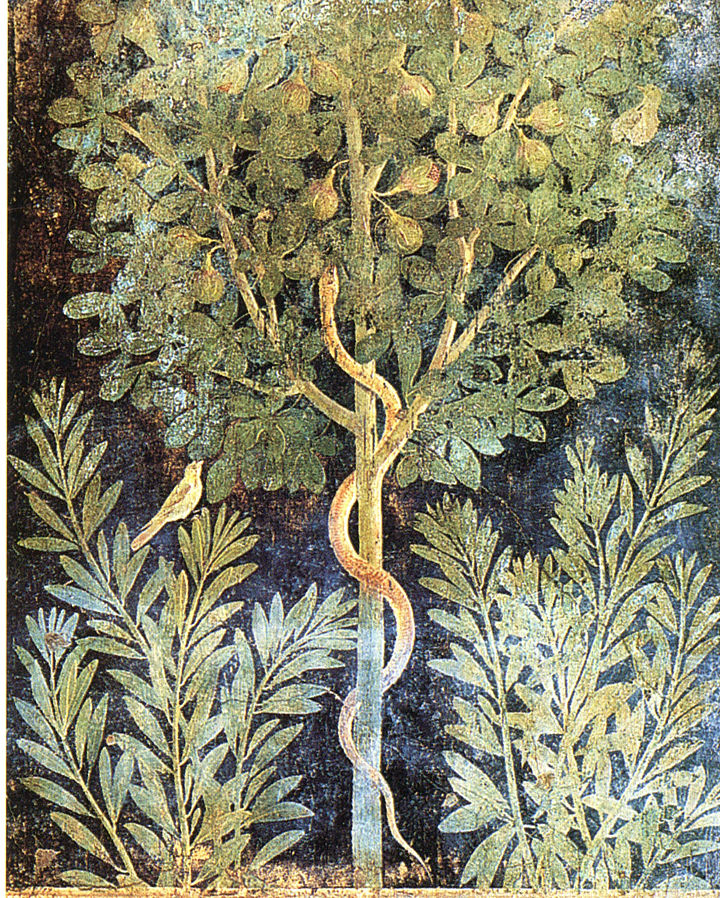
Native to the Middle East and Asia this deciduous shrub or small tree is a member of the mulberry family, Moraceae, that also includes banyan, breadfruit, and Osage-orange. The edible fig is one of the earliest cultivated plants and evidence of fig trees have been found In Neolithic sites from at least 6000 B.C. while records of the culinary use of figs have been found on Sumerian stone tablets dating back to 2500 B.C. . The ancient Roman writer, Cato the Elder (d. 149 B.C.) identifies several strains of figs in his discourse on agriculture, and the historian Cassio Dio (d. 235 A.D.) reports that the first emperor of Rome, Augustus (d. 14 A. D.) was poisoned with figs from his own garden. The ancient Roman naturalist, Pliny the Elder (d. 79 A.D.), records thirty varieties of figs in his Natural History, and praised the fruit for invigorating the youth, improving the health of the aged, retarding the formation of wrinkles, and removing warts when mixed with the latex sap of the plant. Carbonized figs have been found in the excavations at Pompeii and the whole plant and/or fruits are shown in several wall painting in the houses there. Photo Credit Wikipedia

Description: Common fig grows 20-40′ tall and has attractive smooth silver-gray bark and wide spreading branches that may become very picturesque with maturity. The hairy, palmate leaves are dark green on the upper side and light green below. The leaves have three to five lobes, are up to twelve inches long, and have toothed or wavy margins. The greenish male and female flowers are produced in spring inside a modified stem tip on the same plant and are not visible. The “fruit” actually consist of many fruits within the modified stem tip and ripens in late summer to fall. Plants set fruit best in hot dry areas and may produce two crops. Photo Credit Wikimedia Commons
Type: Deciduous shrub or small tree
Size: 20-40’ H x 30-60’ W
Light: Sun; tolerates some shade
Soil: Prefers average, moist, well-drained soil but tolerates a wide variety of soils
Hardiness: Zones 8-10 (6 and 7 with protection)